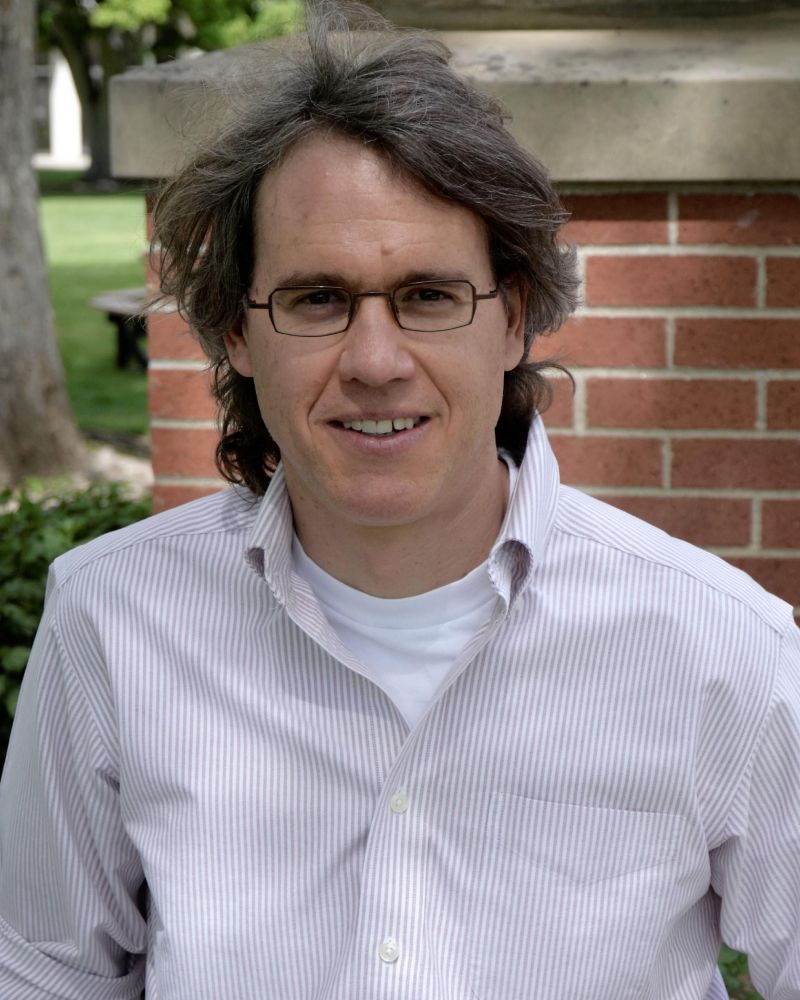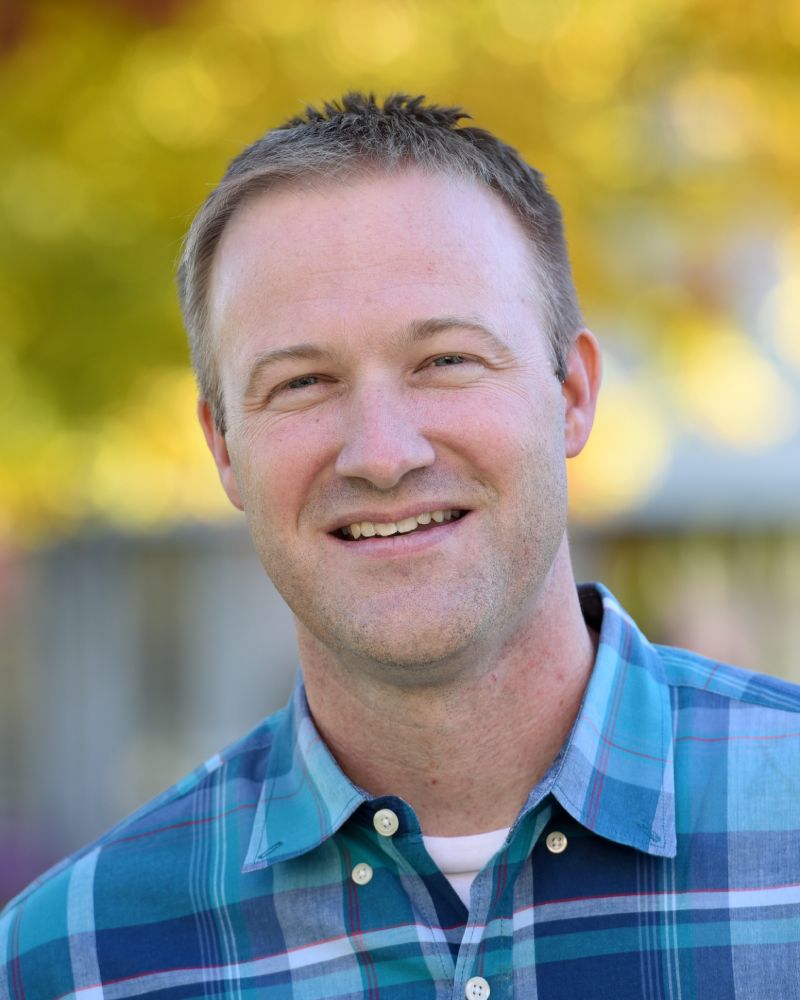
Sarah Wicher
BIO Originally, from Idaho Falls, Idaho. Dr. Wicher was excited to return to Idaho and join the Biology Department as an Assistant Professor at the College of Idaho. Dr. Wicher has been at the college since 2021, regularly teaching Introductory Biology, Microbiology, Immunology, Pathobiology, and the non-majors course Human Biology of Disease. The goal of Dr. Wicher’s current research is to understand the cellular mechanisms that underly lung airway smooth muscle cell aging. She is interested in understanding how chronic low-grade inflammation leads to changes in airway smooth muscle cell structure and function. Dr. Wicher regularly works with students on collaborative research projects. She has received funding to support this work from National Institutes of Health through Idaho INBRE, and the M.J. Murdock Charitable Trust. Students in the Wicher lab use a number of techniques including cell culture, fluorescent microscopy, live cell imaging, molecular biology (PCR, Western blot, ELISA), and computer analysis of biological data. Dr. Wicher’s goal as a professor and mentor is that her students become successful professionals in biology and healthcare. Dr. Wicher is proud of the accomplishments of many College of Idaho graduates who have gained acceptance to professional schools in medicine, nursing, veterinary, biology, dentistry, and physician assistant graduate programs. Dr. Wicher’s favorite part about working at the College of Idaho is the students. When she is not in the classroom Dr. Wicher enjoys hiking, cross country skiing, traveling, and visiting art museums. EDUCATION Post-Doctoral Fellowship, Mayo Clinic Rochester, 2021 Ph.D. Physiology and Pharmacology, Oregon Health & Science University, 2017 B.S Microbiology, University of Idaho, 2008 SCHOLARSHIP & RESEARCH Drake LY, Wicher SA, Roos BB, Khalfaoui L, Nesbitt L, Fang YH, Pabelick CM, Prakash YS. Functional role of glial-derived neurotrophic factor in a mixed allergen murine model of asthma. Am J Physiol Lung Cell Mol Physiol. 2024 Jan 1;326(1):L19-L28. Bhallamudi S, Roos BB, Teske JJ, Wicher SA, McConico A, M Pabelick C, Sathish V, Prakash YS. Glial-derived neurotrophic factor in human airway smooth muscle. J Cell Physiol. 2021 Dec;23 6(12):8184-8196. doi: 10.1002/jcp.30489. PMID: 34170009; PMCID: PMC8671171 Wicher SA, Roos BB, Teske JJ, Fang YH, Pabelick C, Prakash YS. Aging increases senescence, calcium signaling, and extracellular matrix deposition in human airway smooth muscle. PLoS One. 2021 Jul 29;16(7):e0254710. doi: 10.1371/journal.pone.0254710. PMID: 34324543; PMCID: PMC8321097 Banerjee P, Balraj P, Ambhore NS, Wicher SA, Britt RD Jr, Pabelick CM, Prakash YS, Sathish V. Network and co-expression analysis of airway smooth muscle cell transcriptome delineates potential gene signatures in asthma. Sci Rep. 2021 Jul 13;11(1):14386. doi: 10.1038/s41598-021-93845-x. PMID: 34257337; PMCID: PMC8277837. Kai You, Pavan Parikh, Karl Khandalavala, Sarah A Wicher, Logan Manlove, Binxia Yang, Annie Roesler, Ben B Roos, Jacob J Teske, Rodney D. Britt, Christin M Pabelick, YS Prakash (2019) Moderate hyperoxia induces senescence in developing human lung fibroblasts. Am J Physiol Lung Cell Mol Physiol. Pavan Parikh, Rodney Britt, Logan J Manlove, Sarah A Wicher, Annie Roesler, Jovanka Ravix, Jacob Teske, Mike Thompson, Gary Sieck, James L. Kirkland, Nathan LeBrasseur, Dan Tschumperlin, Christina M Pabelick, YS Prakash. Hyperoxia-induced cellular senescence in fetal airway smooth muscle cells (2019). Am J Respir Cell Mol Biol Sarah A. Wicher, Prakash YS, Pabelick CM. (2019) Caveolae, Caveolin-1 and lung diseases of aging. Expert Rev Respir Med Pavan Parikh*, Sarah A. Wicher* Khandalavala K, Pabelick CM, Britt RD Jr., Prakash YS. (2019) Cellular Senescence in the Lung Across the Age Spectrum. Am J Physiol Lung Cell Mol Physiol. *Author’s Contributed Equally Sarah A. Wicher*, Anne M. Roesler*, Jovanka Ravix, Rodney D. Britt Jr., Logan Manlove, Michael A. Thompson, Carol Farver, Peter MacFarlane, Christina M. Pabelick, and YS Prakash (2019) Calcium Sensing Receptor in Developing Human Airway Smooth Muscle. Journal of cell physiology. *Author’s Contributed Equally Parikh P, Britt RD Jr, Manlove LJ, Wicher SA, Roesler A, Ravix J, Teske J, Thompson MA, Sieck GC, Kirkland JL, LeBrasseur N, Tschumperlin DJ, Pabelick CM, Prakash YS., (2018) Hyperoxia Induced Cellular Senescence in Fetal Airway Smooth Muscle. Am J Respir Cell Mol Biol. PROFESSIONAL EXPERIENCE Before coming to the College of Idaho, Dr. Wicher completed a B.S. in Microbiology at the University of Idaho (2008), and a Ph.D. in Physiology and Pharmacology at Oregon Health & Science University. After completion of her Ph.D. Dr. Wicher traveled to Mayo Clinic in Rochester, Minnesota, to complete a postdoctoral fellowship. During her fellowship she fell in love with teaching undergraduates.
Explore More






